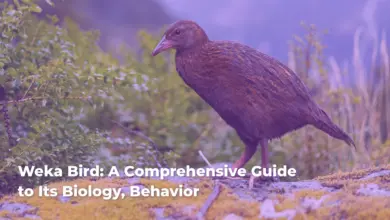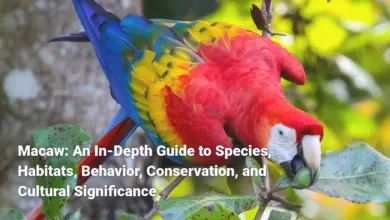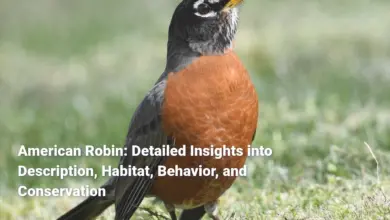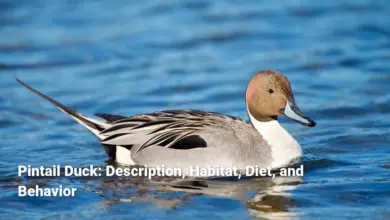Waterfowl: Types, Habitat, Migration, and Conservation
Waterfowl are an extraordinary group of birds that grace our planet with their beauty, diversity, and ecological importance. Comprising ducks, geese, and swans, these avian marvels inhabit a range of environments, from tranquil lakes and rivers to expansive wetlands and coastal regions. They are not just essential to maintaining ecological balance but also enrich human life through culture, recreation, and their fascinating behaviors. This article delves into the various aspects of waterfowl, focusing on their types, habitats, migration patterns, feeding habits, conservation status, and their cultural significance. By understanding waterfowl, we can appreciate their role in ecosystems and the necessity of preserving these incredible birds and their habitats. Join us as we explore the compelling world of waterfowl, the challenges they face, and the extraordinary adaptations that help them thrive in diverse environments.
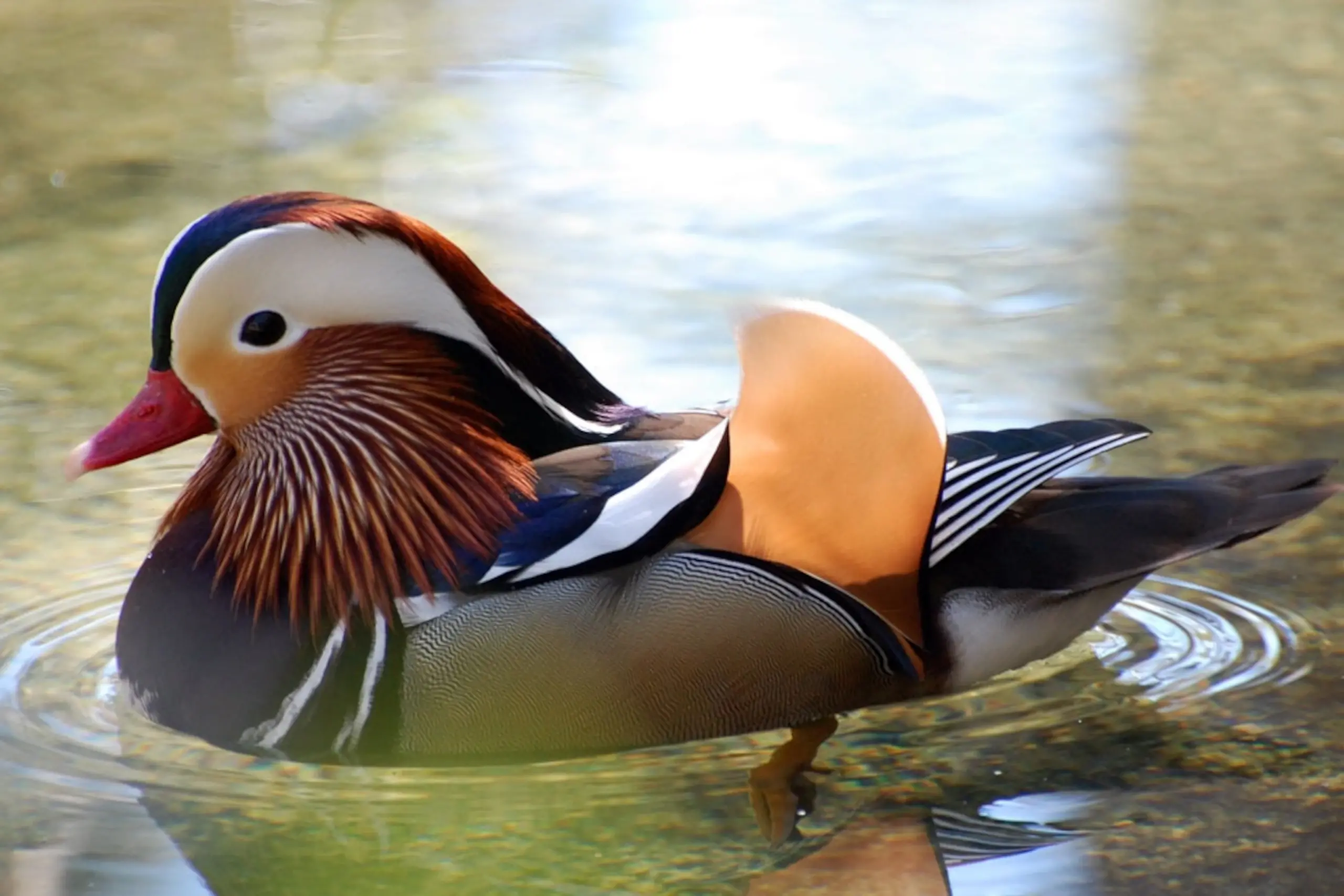
Types of Waterfowl
The world of waterfowl is as diverse as it is captivating. Waterfowl can broadly be categorized into three primary groups: ducks, geese, and swans. Each group exhibits unique characteristics, behaviors, and adaptations that allow them to thrive in their respective habitats.
- Ducks: Ducks are perhaps the most varied and ubiquitous of waterfowl. They can be further divided into dabbling ducks, diving ducks, sea ducks, wood ducks, and teals.
- Dabbling Ducks: Generally feeding at the water’s surface, these ducks tip their bodies to reach submerged vegetation. Notable examples include the Mallard, easily spotted by its vibrant green head.
- Diving Ducks: These ducks dive underwater to find food, like the Canvasback and Greater Scaup, showing remarkable agility and strength.
- Wood Ducks: Known for their stunning plumage and unique nesting habits, they are cavity-nesters, which sets them apart from typical ducks.
- Teals: These smaller ducks are agile flyers and known for their swift movements, making them fascinating subjects for birdwatchers.
- Geese: Generally larger than ducks, geese are known for their strong familial bonds and migratory behaviors. The Canada Goose, with its distinctive black head and neck, has adapted well to both wild and urban environments.
- Greylag Goose and Snow Goose are others that highlight the adaptability of geese, thriving across a range of climates these birds are symbols of the wilderness in many cultures.
- Swans: Renowned for their gracefulness, swans are the largest waterfowl and are often seen gliding across lakes and rivers. They are deeply tied to human culture, symbolizing love and fidelity, with the Mute Swan being the most recognized globally.
- Whooper Swan, Black Swan, and Trumpeter Swan are other notable examples, each demonstrating unique traits and behaviors.
Waterfowl not only contribute richly to their ecosystems but also serve as indicators of environmental health. Their presence often speaks to the quality of their habitat, making them vital components of conservation efforts worldwide.
Ducks
Ducks are an incredibly diverse group of waterfowl that can be observed in various habitats around the world. They are characterized by their relatively small size compared to geese and swans, lively behaviors, and colorful plumage that varies significantly between species. When discussing ducks, it’s essential to recognize the distinctions between various subcategories, which include dabbling ducks, diving ducks, and more.
Dabbling Ducks: Dabbling ducks primarily feed by tipping forward into the water to reach food beneath the surface, such as aquatic plants and seeds. The Mallard (Anas platyrhynchos) is one of the most iconic dabbling ducks, often seen in parks and ponds. Males are easily identified by their vibrant green head, while females possess mottled brown feathers that provide excellent camouflage. They play significant roles in wetland ecosystems by aiding in seed dispersal and contributing to the health of aquatic plants.
Diving Ducks: Unlike dabbling ducks, diving ducks submerge fully to forage. Species like the Canvasback are known for their elongated necks and distinctively shaped heads, making them adept divers. They primarily hunt for submerged vegetation and small fish, showcasing the versatility and adaptability of ducks. Their diving skills allow them to occupy ecological niches not accessible to dabblers, effectively reducing competition for food resources.
Teals: Teals are smaller, agile ducks that are usually found in freshwater environments. The Blue-Winged Teal is one such species, easily recognizable by its distinctive blue patch on its wings and compact size. Teals are often seen in pairs or small groups, making their courtship displays an engaging sight for birdwatchers.
Wood Ducks: Wood Ducks are unique in their nesting preferences; unlike most ducks that nest on the ground or in reeds, Wood Ducks often use tree cavities for nesting. The male is particularly striking, showcasing iridescent feathers and distinct facial markings. This species thrives in wooded swamps and marshes, emphasizing the importance of diverse habitat structures for duck populations.
Sea Ducks: Adapted to life in marine environments, sea ducks like the Common Eider specialize in diving for shellfish and other marine invertebrates. Their robust bodies and insulating feathers equip them to thrive in colder waters, allowing them to exploit food resources unavailable to more terrestrial ducks.
In assessing the ecological impact of ducks, it’s essential to note that they serve as key indicators of habitat health. Their feeding habits help regulate aquatic plant growth, contributing to the overall biodiversity of wetland ecosystems. Conservation organizations, like Ducks Unlimited, work tirelessly to preserve duck habitats an effort crucial for maintaining balanced ecosystems and ensuring their survival for generations to come.
Geese
Geese are a vital subgroup of waterfowl characterized by their migratory behaviors, strong familial bonds, and unique habitat preferences. Although primarily associated with cold climates, geese can thrive in diverse environments across the globe. This section will highlight several key species, their behaviors, and their ecological significance.
General Characteristics: Geese are larger than ducks and typically exhibit a more robust build with longer necks. Their distinguishing features often include a characteristic honking call and a strong sense of social cohesion during migration and foraging.
Key Species Overview: Several species of geese are prevalent worldwide, with some of the most notable being:
- Canada Goose (Branta canadensis): Perhaps the most recognized goose in North America, the Canada Goose is notable for its black head and neck contrasted by a white chinstrap. These birds are migratory, traveling thousands of miles between their breeding grounds in Canada and the United States during winter. Their adaptability has allowed them to thrive in urban settings as well.
- Greylag Goose (Anser anser): This species is primarily found in Europe and parts of Asia. With its prominent orange bill and distinctive honking calls, the Greylag Goose is the ancestor of domestic geese and plays an essential role in agricultural ecosystems.
- Snow Goose (Anser caerulescens): Known for its beautiful white plumage and distinctive black strategy used during migration, the Snow Goose exhibits remarkable resilience, adapting well to varied habitats from tundras to marshes.
- Egyptian Goose (Alopochen aegyptiaca): A striking species characterized by its chestnut-brown plumage and unique facial markings, the Egyptian Goose is prevalent in sub-Saharan Africa. It often inhabits wetlands and is recognized for its strong nesting behaviors.
- Upland Goose (Chloephaga picta): Found in southern South America, this goose exhibits sexual dimorphism, with males showcasing vibrant plumage while females are more muted in color. Their foraging behaviors include grazing on grasses and seeds, showcasing their adaptability to different habitats.
Ecological Importance: Geese play critical roles within their ecosystems, functioning as grazers that help control vegetation growth, which in turn supports other wildlife. Their migratory patterns contribute to nutrient cycling, as they often feed on agricultural fields and redistribute nutrients across different habitats during their travels. Additionally, they serve as indicators of environmental change, indicating shifts in habitat quality and availability.
Understanding the behaviors and importance of geese is vital for conservation efforts, particularly given their susceptibility to habitat loss from urban development and agricultural practices. Organizations dedicated to waterfowl conservation engage in habitat restoration projects to support goose populations, emphasizing the need for preserving wetlands and grasslands that are vital to these remarkable birds.
Swans
Swans are among the most majestic of waterfowl, renowned for their elegance and beauty. As the largest species within the waterfowl family, swans typically exhibit strong pair bonds and are often seen gliding gracefully across lakes and ponds. This section will delve into the key species of swans, their behaviors, breeding habits, and their ecological roles in aquatic ecosystems.
Key Species Overview: The family of swans includes several distinct species that each exhibit unique traits and adaptations. Some of the most recognized species are:
- Mute Swan (Cygnus olor): Common across Europe, the Mute Swan is characterized by its curving neck and relatively silent demeanor. They are known for their impressive nesting structures and territorial behavior, particularly during the breeding season. The male swan, or cob, is often seen defending its territory against intruders, showcasing this species’ strong parental instincts.
- Whooper Swan (Cygnus cygnus): Recognizable by its loud, trumpet-like call, the Whooper Swan is found in parts of northern Europe and Asia. These swans are celebrated for their long migrations and elaborate courtship dances, which involve synchronized movements and vocalizations to display their bond.
- Black Swan (Cygnus atratus): Native to Australia, the Black Swan is notable for its striking black plumage and red bill. Unlike many other swan species, Black Swans can often be found in freshwater lakes and marshes, where they feed on submerged vegetation.
- Trumpeter Swan (Cygnus buccinator): Known for its powerful call that resembles a trumpet, the Trumpeter Swan is one of North America’s largest swan species. They primarily inhabit shallow lakes and wetlands, utilizing their long necks to reach food underwater. Trumpeter Swans often establish permanent nesting sites, reinforcing their role as vital contributors to the aquatic ecosystem.
Breeding and Nesting: Swans are known for their monogamous pair bonds that can last a lifetime. They typically engage in elaborate courtship displays to reinforce their connection, which can include synchronized swimming and vocalizations. Nesting usually occurs near the edges of marshes or lakes, where they construct large nests from reeds and grasses. The female swan, or pen, primarily incubates the eggs, while the male takes charge of guarding the nest and protecting the young cygnets.
Ecological Importance: Swans play a crucial role in aquatic ecosystems, primarily through their feeding habits. They help control aquatic vegetation, thus maintaining a balanced ecosystem. For instance, their foraging leads to nutrient redistribution, which can benefit a myriad of aquatic organisms. Moreover, swans are often considered indicators of water quality due to their sensitivity to pollution and habitat changes.
Conservation of swan populations is vital, especially as human activities encroach on their habitats. Protecting wetland areas and ensuring clean water sources contribute to the sustainability of these magnificent birds and the ecosystems they inhabit. Organizations focused on waterfowl conservation work tirelessly to ensure swans and their habitats are preserved for generations to come.
Habitat of Waterfowl
Waterfowl can be found in a multitude of habitats that provide essential resources for their survival. They depend heavily on wetland ecosystems, which are critical for breeding, feeding, and shelter. Understanding the various habitats where waterfowl thrive is vital for their conservation and the health of the ecosystems they inhabit.
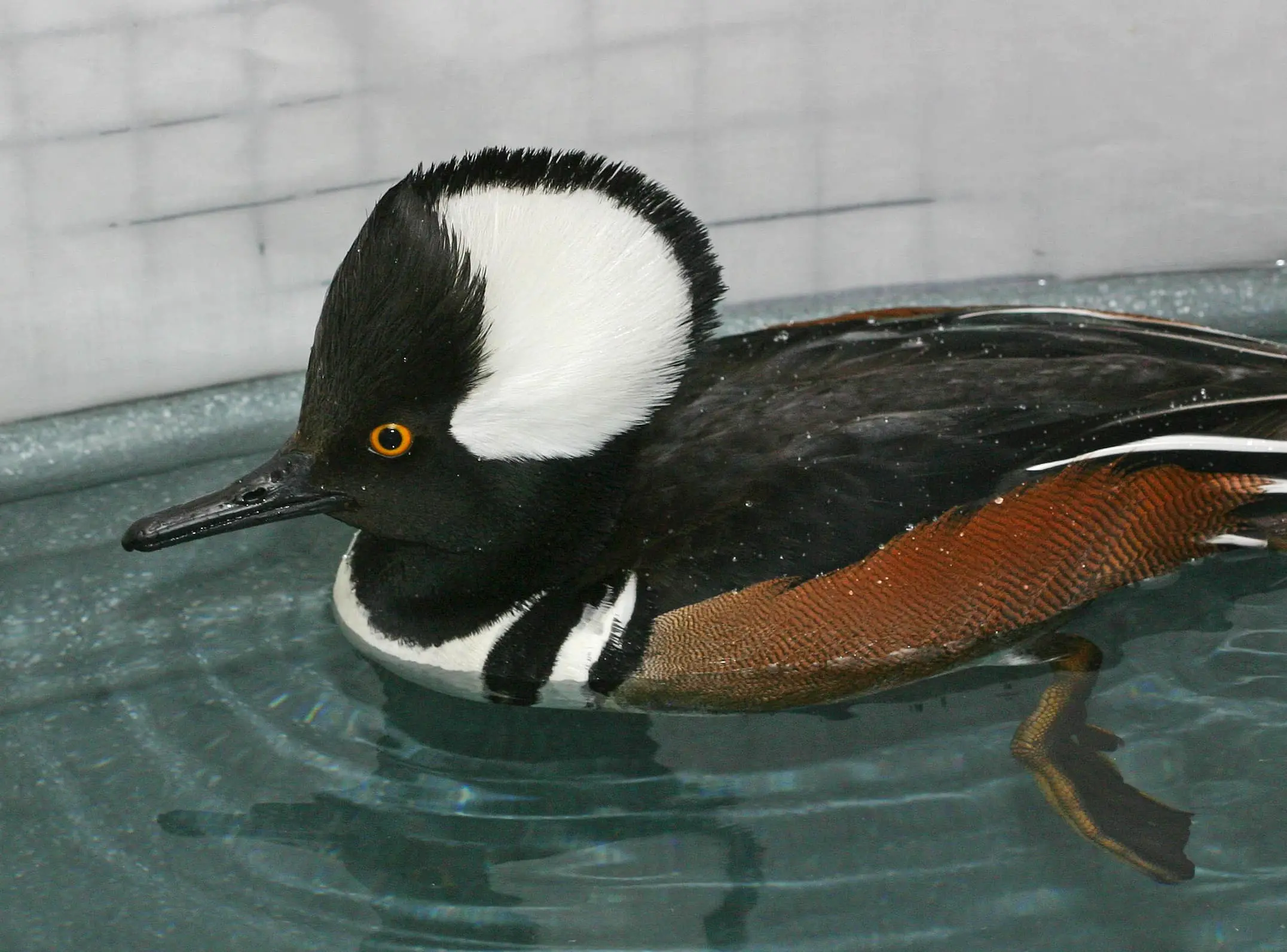
Freshwater Environments
Freshwater habitats are crucial to waterfowl survival, providing rich resources including food, nesting sites, and protection from predators. Wetlands, lakes, rivers, and marshes comprise essential environments that support various waterfowl species.
- Wetlands as Critical Ecosystems: Wetlands are among the most productive ecosystems on Earth and are vital for many waterfowl species during their life cycles. They serve as breeding and nesting grounds for ducks, geese, and swans.
- Diversity of Food Sources: Freshwater environments are rich in diverse food resources. Waterfowl exploit seeds, aquatic vegetation, invertebrates, and small fish. Some species have specialized feeding adaptations that allow coexistence among various taxa depending on habitat features and available resources.
- Specific Freshwater Habitats:
- Freshwater Marshes: Characterized by abundant herbaceous plants, these provide excellent breeding and nesting habitats.
- Rivers and Streams: They serve as critical feeding grounds where waterfowl can forage in shallow areas.
- Lakes and Ponds: These bodies of water are significant stopover sites during migration, often containing abundant aquatic vegetation.
Conservation efforts in freshwater habitats are paramount, given the alarming loss of wetlands due to urbanization, agricultural expansion, and climate change. Organizations like Ducks Unlimited work to protect and restore these critical ecosystems for waterfowl and myriad other species that share their habitats.
Saltwater Environments
Saltwater environments also provide vital habitats for waterfowl, especially migratory species that rely on coastal areas during their travels. Estuaries and marshlands are particularly rich in nutrients and support expansive populations of aquatic organisms. This section highlights the significance of saltwater habitats for waterfowl.
- Estuarine Ecosystems: Areas such as the Chesapeake Bay are essential for waterfowl, offering diverse food options and critical wintering grounds. The mix of saltwater and freshwater supports vital bay grasses that provide foraging and shelter for waterfowl.
- Diversity of Habitat Functions: Saltwater environments contribute to numerous ecological functions that support both resident and migratory waterfowl, including nutrient filtration, storm protection, and habitat for fish species. The interdependence between aquatic systems underscores the need for ongoing conservation efforts.
- Importance of Conservation: As urbanization and climate change threaten coastal habitats, the preservation of saltwater ecosystems becomes increasingly essential. Protecting these areas not only supports waterfowl populations but also maintains the broader ecological integrity of coastal environments.
Adequate management and protection of saltwater habitats are vital for ensuring the survival of migratory waterfowl and the numerous other species reliant on these dynamic ecosystems.
Urban Areas
Interestingly, urban areas have emerged as unexpected but viable habitats for certain waterfowl species, particularly ducks. Many cities incorporate green spaces, parks, and artificial ponds, providing essential resources to support waterfowl populations.
- Urban Adaptation: As cities expand, certain species like the Mallard adapt to urban environments. These ducks often find opportunities for nesting in parks and ponds, showcasing their resilience.
- Habitat Creation: Urban landscapes can sustain diverse wildlife, including waterfowl, particularly as urban areas evolve to prioritize green spaces. Efforts to create wildlife-friendly parks facilitate habitats for waterfowl amidst urban settings.
- Challenges of Urbanization: Urban development poses significant challenges to waterfowl through habitat loss and fragmentation. Continuous urbanization impacts water quality, and management strategies are necessary to alleviate pressure on these birds while ensuring their health.
Managing the interplay between urbanization and wildlife conservation is essential as cities evolve. By strategically incorporating habitats and green spaces into urban planning, we can support thriving waterfowl populations in increasingly urbanized landscapes.
Migration Patterns of Waterfowl
The migration of waterfowl is a fascinating aspect of their life history, shaped by environmental elements, seasonal changes, and biological cues. Understanding migration patterns is essential for conserving these birds and improving ecological health across their habitats.
Seasonal Migration
Waterfowl, such as ducks and geese, exhibit impressive migratory behaviors primarily driven by the need for food, shelter, and breeding grounds. These migrations are complex and occur along well-defined routes, influenced by numerous factors:
- Timing of Migration: Waterfowl migrations typically initiate due to changes in daylight, which serve as biological cues. Increased daylight in spring leads to preparatory behaviors, with elevating food intake and readiness for migration. Conversely, in the fall, many waterfowl, such as the Northern Pintail, begin their migrations before significant cold weather sets in.
- Environmental Triggers: Weather plays a notable role in migration timing. Conditions like cold fronts can catalyze movement, suggesting a need for immediate action to find more hospitable habitats. Waterfowl have a remarkable ability to sense imminent changes, prompting them to relocate in search of food and suitable environments.
- Routes and Habitats: Conservation of key stopover sites is essential as waterfowl depend on these areas to refuel during their journeys. These rest areas have a significant influence on migration efficiency and affect their survival rates.
- Research Significance: Recent studies, including satellite tracking campaigns, provide valuable insights into migration dynamics and changes in stopover sites. This information is crucial for restructuring management efforts to ensure the conservation of critical habitats vital for migratory birds.
Understanding the seasonal migration of waterfowl is crucial for housing and environmental planning. Protecting migration corridors and stopover sites leads to more effective conservation practices ensuring the long-term survival of these species.
Behavioral Strategies
The behavioral strategies employed by waterfowl during migration significantly influence their migration patterns and survival rates. These strategies encompass navigation techniques, foraging behaviors, and social dynamics, all of which are closely linked to environmental conditions.
- Navigation Techniques: Waterfowl have the innate ability to utilize various environmental cues for navigation. Research suggests that factors such as the position of the sun, stars, and geographic landmarks assist in accurate migration routes, enabling them to find their way over vast distances.
- Foraging Behavior: During migration, waterfowl must locate suitable feeding sites to replenish energy reserves. They utilize established stopover points, where they exploit resource surpluses. Different species may exhibit varied foraging techniques that align with their ecological niches.
- Social Dynamics: Social structures within waterfowl communities play an essential role during migration. Flocking behavior helps with navigation, enhances foraging efficiency, and provides protection against predators. Species such as geese rely heavily on group dynamics during migratory flights, reinforcing social bonds that contribute to communal success.
- Environmental Influences: Climate change and habitat alterations have significant impacts on behavioral strategies. Changes in temperature, weather patterns, and habitat availability can lead to shifts in migratory timing and routes. Investigating these influences is crucial to understanding waterfowl populations’ future dynamics and their responses to a changing environment.
Conservation Implications
Addressing migration patterns and behavioral strategies offers valuable insights for shaping effective conservation strategies. As waterfowl populations face growing threats, prioritizing the protection of migratory routes and stopover sites is paramount. Collaborative efforts between researchers, conservationists, and agencies will enhance the success of initiatives aimed at preserving the incredible journeys of waterfowl.
Feeding Habits of Waterfowl
The feeding habits of waterfowl are diverse and reflect their adaptability to various habitats and dietary needs. Their foraging techniques and food preferences are integral to their survival, reproduction, and overall impact on ecosystems.
Foraging Techniques
Waterfowl utilize a range of foraging techniques that are adapted to their environments and the types of food they consume. Some key methods include:
- Dabbling: Many ducks, such as the Mallard, exhibit dabbling behavior, where they tip forward into the water to reach food resources just below the surface. This technique allows them to access aquatic plants, seeds, and small invertebrates without fully submerging.
- Diving: Diving ducks, such as the Canvasback, utilize powerful legs and compact bodies to submerge while searching for food. Their agility underwater enables them to forage for a variety of resources, including aquatic plants, fish, and mollusks.
- Grubbing: Certain species, like snow geese, employ grubbing techniques where they uproot plants and tubers from the ground. Their stout, wedge-shaped bills facilitate this feeding behavior.
- Filtering: Filtering is a vital technique used by ducks like the Northern Shoveler, which possess specialized lamellae in their bills to sift through water and extract invertebrates and seeds.
Diet Variations
Waterfowl exhibit notable dietary variations that evolve according to food availability and seasonal changes. Some key aspects of their diets include:
- Seasonal Dietary Changes: Waterfowl alter their feeding habits depending on the time of year. In winter, they primarily consume carbohydrate-rich plant materials, such as seeds and agricultural grains, to build fat reserves necessary for migration.
- Breeding Season Diet: During the breeding season, many waterfowl shift to high-protein diets, rich in aquatic invertebrates, to support reproduction. This shift is critical for female ducks, who require extra protein for egg production.
- Flexibility in Feeding Habits: Waterfowl display flexibility in their diets based on immediate availability, allowing them to adapt to changing circumstances and environmental conditions. This adaptability enables them to thrive across diverse habitats.
Impact on Ecosystems
Waterfowl significantly influence local ecosystems through their feeding habits. Their foraging behaviors help control plant populations, maintain habitat diversity, and support nutrient cycling within aquatic systems. Additionally, as they transport nutrients and contribute to soil enrichment through droppings, waterfowl play vital roles in shaping the ecological properties of their environments.
Understanding the feeding habits and diet variations of waterfowl is crucial for effective management and conservation efforts. Preserving the habitats that support their diverse diets is imperative for maintaining their populations and the ecological health of wetland ecosystems.
Conservation Status of Waterfowl
The conservation status of waterfowl is influenced by a multitude of factors, including habitat loss, climate change, and human activities. The need to monitor and protect these birds has never been more critical, given the ongoing pressures they face.
Threats to Waterfowl Populations
- Habitat Loss: One of the most significant threats arises from habitat loss due to agricultural expansion, urbanization, and wetland drainage. An estimated 50% of North American wetlands have disappeared over the last century, drastically affecting waterfowl habitats.
- Climate Change: Shifts in climate patterns, including more frequent droughts and extreme weather events, affect the availability of food and suitable nesting sites for waterfowl. As conditions fluctuate, their habitats may no longer support the species reliant on them.
- Anthropogenic Pressures: Human-induced disturbances, including pollution, urban development, and hunting, further exacerbate the challenges faced by waterfowl. Sustainable hunting practices and responsible urban planning are crucial to mitigate these impacts.
- Endangered Species: Approximately 30 waterfowl species worldwide are classified as threatened or endangered. In North America, certain subpopulation declines highlight the urgent need for focused conservation efforts.
Conservation Efforts
- Legislative Frameworks: Policies like the North American Wetlands Conservation Act aim to protect and restore crucial habitats for waterfowl. These initiatives provide funding and resources to support conservation organizations in vital habitat restoration projects.
- Monitoring Programs: Reliable data from programs such as the Waterfowl Breeding Population and Habitat Survey are paramount for understanding population trends and informing management strategies. Continuous monitoring enables the assessment of conservation efficacy and identification of at-risk species.
- Collaborative Conservation: Organizations like Ducks Unlimited play pivotal roles in protecting wetland habitats, successfully restoring millions of acres across North America. Collaborative efforts involving government agencies, conservation groups, and local communities yield crucial results for waterfowl populations.
- Public Awareness and Engagement: Building public awareness about the plight of waterfowl fosters a culture of stewardship. Engaging communities in conservation efforts, from habitat cleanups to educational programs, encourages collective responsibility toward protecting these birds and their ecosystems.
In summary, the conservation status of waterfowl remains challenging, with significant threats to their survival. Ongoing efforts to protect their habitats and enhance public awareness are essential for securing a sustainable future for these magnificent birds.
Waterfowl and Human Interaction
The relationship between waterfowl and humans is deeply intertwined, characterized by both beneficial interactions and challenges. As humans increasingly occupy natural habitats, understanding this relationship is essential for fostering coexistence and effective conservation.
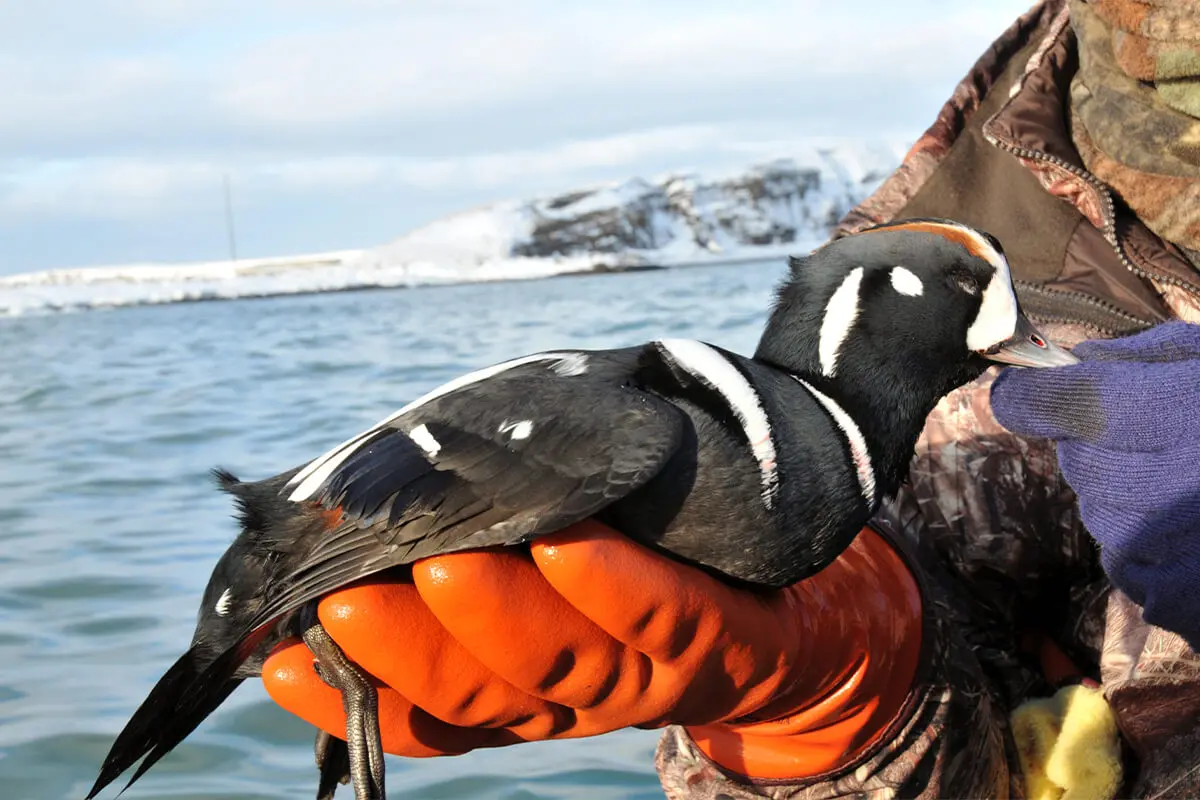
Hunting and Regulations
- Regulatory Frameworks: Waterfowl hunting in the United States is tightly regulated by laws such as the Migratory Bird Treaty Act, which establishes seasons, bag limits, and methods of take. These regulations ensure sustainable hunting practices while protecting migratory species.
- Hunting Seasons and Limits: The U.S. Fish and Wildlife Service sets annual frameworks for waterfowl hunting seasons, typically spanning from September to January. These laws aim to balance recreational hunting with ecosystem health, setting maximum days for open seasons to safeguard breeding populations.
- Impact on Biodiversity: Recreational hunting can significantly impact biodiversity. While managed hunting can support conservation efforts through regulatory frameworks, unsustainable practices risk population declines.
- Public Engagement: Engaging the public in regulatory processes creates transparency and fosters participation in conservation efforts. Comment periods allow for community feedback that can shape hunting regulations and conservation practices to protect waterfowl.
Ecotourism
- Ecotourism as a Conservation Tool: Ecotourism is presented as an avenue for dual benefits, supporting local communities while promoting conservation efforts. Birdwatching and wildlife tourism have seen increased popularity, highlighting the need to balance human interests with the well-being of waterfowl.
- Disturbance from Human Activities: While ecotourism creates considerable economic opportunities, it can also disturb waterfowl habitats. Increased human presence can lead to stress in waterfowl populations and impact their reproductive success.
- Promoting Sustainable Practices: Sustainable ecotourism encourages minimal disturbance and emphasizes the importance of respecting wildlife. Educational programs targeting tourists can foster wildlife-friendly behaviors that support waterfowl and their habitats.
Impact of Urban Development
- Habitat Loss: Urban development poses significant challenges to waterfowl, with habitat degradation and fragmentation frequently occurring as cities expand. This transformation of landscapes threatens the availability of critical breeding and feeding grounds.
- Opportunities in Urban Areas: Interestingly, some species, like the Mallard, have adapted to urban settings, finding suitable nesting and foraging opportunities within parks and artificial ponds. Understanding these adaptations can inform urban management strategies to incorporate wildlife-friendly designs.
- Integrated Conservation Strategies: Emphasizing the need for integrated approaches can ensure that both waterfowl populations and urban development coexist effectively. Maintaining green spaces and wetland areas within urban settings fosters habitats that benefit both wildlife and residents.
The interaction between waterfowl and human activities creates a complex dynamic that necessitates ongoing dialogue and collaboration. By prioritizing conservation while engaging in urban planning and recreational activities, we can support the sustainability of waterfowl populations and the ecosystems they inhabit.
Waterfowl in Culture
Waterfowl hold significant roles in various cultures, embodying a range of symbolic meanings, folklore, and artistic expressions. Their presence extends beyond ecological contributions, influencing human thought and creativity across the ages.
Symbolism and Folklore
- Cultural Significance: Ducks and other waterfowl have appeared in diverse cultural contexts, symbolizing themes such as adaptability, hope, and communication. In ancient Egypt, ducks were associated with deities like Isis, representing rebirth and fertility, prevalent in numerous rituals and art forms.
- Cultural Representations: In Chinese culture, ducks, particularly the Mandarin duck, symbolize marital fidelity and prosperity. Their appearance in art often reflects harmony and love, with specific tales including ducks as symbols of good fortune in agricultural practices.
- Narratives in Native American Traditions: Native American tribes often attribute spiritual meanings to ducks, viewing them as messengers between realms. Their adaptability is celebrated in narratives that emphasize resilience and growth within ever-changing environments.
Representation in Art and Literature
- Artistic Depictions: Waterfowl grace paintings, sculptures, and literature, representing not only their beauty but also broader themes of nature, peace, and reflection. Their elegance has inspired countless masterpieces.
- Literary Symbolism: Authoritative works often use waterfowl as metaphysical metaphors representing change, transformation, and connection to nature. From tales of growth to explorations of human emotions, their presence evokes deep reflections on life and relationships.
Culinary Uses
- Culinary Traditions: Waterfowl are integral to various cuisines, showcasing local ingredients and cooking practices. In French cuisine, duck is revered, with dishes like Coq au Vin showcasing the versatility of duck meat.
- Cultural Practices: In Asian cultures, waterfowl such as ducks are staples in culinary traditions with significant cultural symbolism. Dishes like Peking Duck represent traditions that extend beyond culinary realms into festive celebrations.
- Traditional Uses in Native American Cultures: Waterfowl have significant importance in the diets and cultural practices of Native American tribes, where they have celebrated kinship and gratitude within shared feasts.
Through symbolic representations, artistic expressions, and culinary traditions, waterfowl exemplify the intricate relationship between nature and culture. They enrich our understanding of humanity’s connection to the natural world, providing inspiration for generations.
In summary, the multifaceted roles of waterfowl in various cultural contexts underscore their significance far beyond their ecological contributions. Their representation in symbolism, art, and culinary uses highlight the enduring connections that humans have with these remarkable creatures.
This comprehensive exploration of waterfowl has aimed to illuminate their diverse types, habitats, behaviors, interactions with humans, and cultural significance. As stewards of the environment, it is our responsibility to ensure their survival and promote conservation efforts that protect their habitats and breeding grounds. Recognizing the importance of waterfowl within ecosystems can inspire further action in safeguarding these magnificent birds for generations to come.






